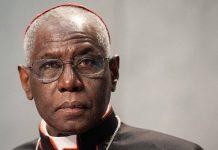Scotland (Friday, July 14, 2017, Gaudium Press) Fragments of a wooden hut found on the Scottish island of Iona have been confirmed as the remains of the sixth-century cell of St Columba.
St Columba founded a monastery at Iona that became one of Europe’s leading centres of learning and served as the springboard for the evangelisation of Scotland.
The Irish monk was renowned for his sanctity and his life was associated with many miracles. His guidance for monastic life was followed in Scotland, Ireland and Northumbria until it was superseded by the milder Rule of St Benedict.
His biographer Adomnán wrote that in his old age he slept on a bare slab of rock, ate barley and oat cakes, and drank only water. Adomnán said: “He never let a single hour pass without engaging in prayer or reading or writing or some other occupation. He endured the hardships of fasting and vigils without intermission by day and night; the burden of a single one of his labours would have seemed beyond the powers of man.
“And, in the midst of all his toils, he appeared loving unto all, serene and holy, rejoicing in the joy of the Holy Spirit in his inmost heart.”
A team of archaeologists tested a sample of hazel charcoal taken from the presumed site of St Columba’s cell 60 years ago.
The charcoal had been kept in a matchbox in a garage in Cornwall for several decades.
It had been found at Tòrr an Aba, the “mound of the abbot”, a rocky hillock traditionally thought to be the site of St Columba’s cell.
The sample has now been carbon-dated as between AD 540 and AD 650.
The hut appears to have burned down. It lay underneath beach pebbles and had been marked with a stone cross.
The existing abbey on the island dates back to the 12th century. It ceased functioning as a monastery after the Reformation but was revived by the ecumenical Iona Community in 1938.
Professor Thomas Clancy, Celtic and Gaelic historian at the University of Glasgow, said: “The results of the radiocarbon dating are nothing short of exhilarating. The remains on top of Tòrr an Aba had been dismissed as from a much later date. Now we know they belonged to a structure which stood there in Columba’s lifetime. More than that, the dates, and our new understanding of the turning of the site into a monument not long after its use, makes it pretty clear that this was St Columba’s day or writing house. From here, he oversaw the day-to-day activities of his monastery.
“Even more exciting, we may even have a manuscript written in Columba’s ‘little house’. The ‘Cathach’, a manuscript of the psalms was long been reputed to be Columba’s own writing, and which is certainly one of our earliest manuscripts from this part of the world, dating to Columba’s time, was certainly written on Iona. If Columba indeed wrote it, and I see no good reason why he shouldn’t have, it was likely in the ‘little house’ whose remains have now been pinned to Columba’s own lifetime.”
The project was led by archaeologists Dr Ewan Campbell and Dr Adrián Maldonado and was funded by Historic Environment Scotland.
Source Catholic Hrerald



































